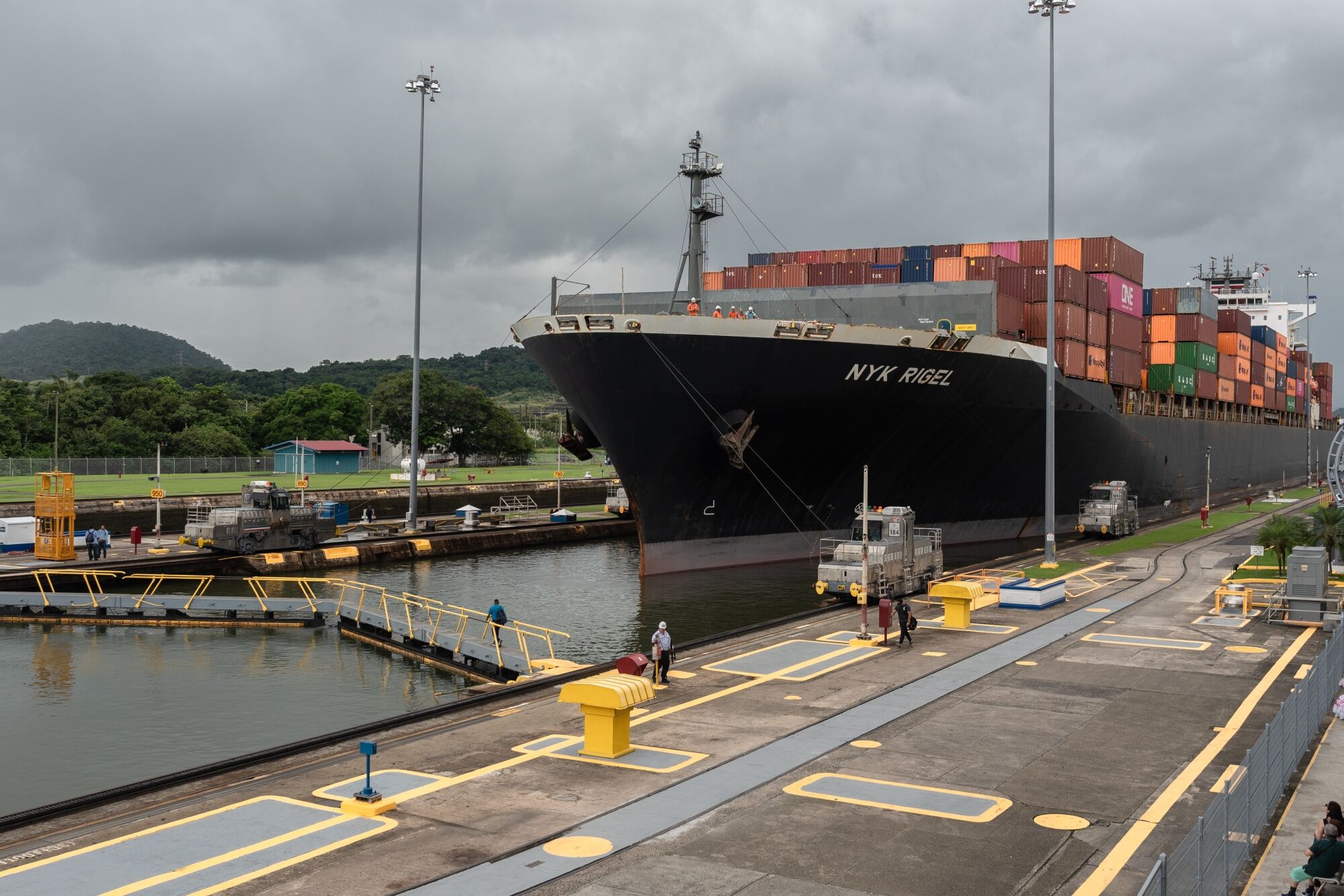

A container ship navigates through the Miraflores locks of the Panama Canal on Nov. 3. Drought has led to restrictions on ships transiting the waterway. Photographer: Bloomberg
As the world veers further off course from its goal of limiting global warming to 1.5C above pre-industrial levels, banks are increasingly having to pay attention to the financial implications of a rapidly-warming planet.
The economic shocks inherent to the current trajectory of global warming may leave banks facing loan losses and impaired balance sheets. The Basel Committee on Banking Supervision has said climate change has the potential to affect “the safety and soundness of banks and the stability of the broader banking system.”
Until recently, banks have mainly focused on what so-called transition risks mean for their underlying business. These risks are tied to changes in asset values and other costs associated with the decarbonization of the global economy.
“…long-term changes in weather patterns are … forcing the financial industry to ‘sharpen its understanding’ of physical risks.”
Gianluca Cantalupi, JPMorgan Chase & Co.
But as temperatures soar around the world, triggering a deadly cocktail of wildfires, storms and drought, banks are now being forced to pay greater attention to what are known as “physical risks.”
The potential losses from extreme events and long-term changes in weather patterns are becoming more prominent, forcing the financial industry to “sharpen its understanding” of physical risks, said Gianluca Cantalupi, head of climate, nature and social risk at JPMorgan Chase & Co.
And there’s little secret why. Here are just some of the recent calamities: Floods in Pakistan wiped out 2.2% of the country’s gross domestic product in 2022; Canada’s worst wildfire season on record in 2023 took a heavy toll on the local economy; and a crippling drought at the Panama Canal has impaired a waterway that handles $270 billion a year in global trade.
“These events are happening more and more frequently, and so we need to be educated—to be risk-aware,” Cantalupi said. “I need to know the physical risks the bank might face when making lending decisions: Will a semiconductor company face water stress? Will logging in certain provinces cause landslides that destroy factories or other infrastructure?”
To prepare for an increasing number of environmental disasters, JPMorgan has been adding […]
Full article: www.bloomberg.com
Clean water is essential for life, yet millions of Americans unknowingly consume contaminants through their…
Human brains contain higher concentrations of microplastics than other organs, according to a new study, and the…
From the Office of the Governor: In anticipation of a multi-day, significant atmospheric river in Northern California,…
From Governor Newsom: Scientists, water managers, state leaders, and experts throughout the state are calling…
Photo: A harmful algal bloom in Milford Lake, Kansas, made the water appear bright green.…
An expanded plastic foam coffee cup is at a donut shop in Monterey Park, California.…